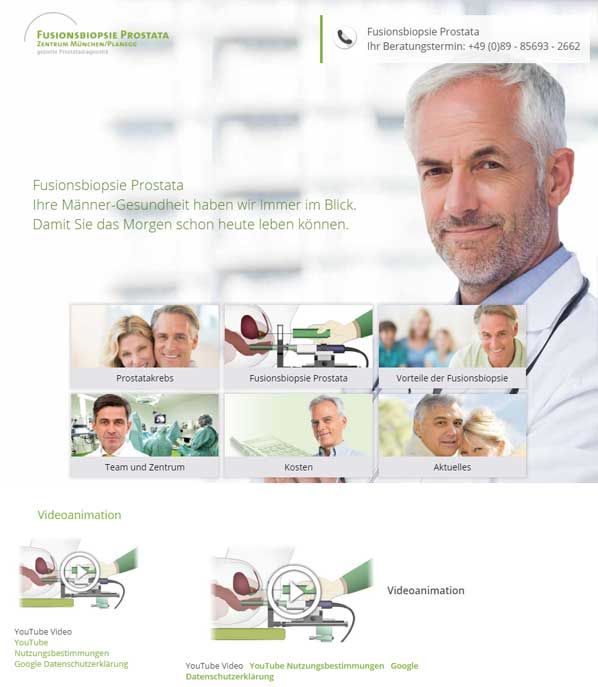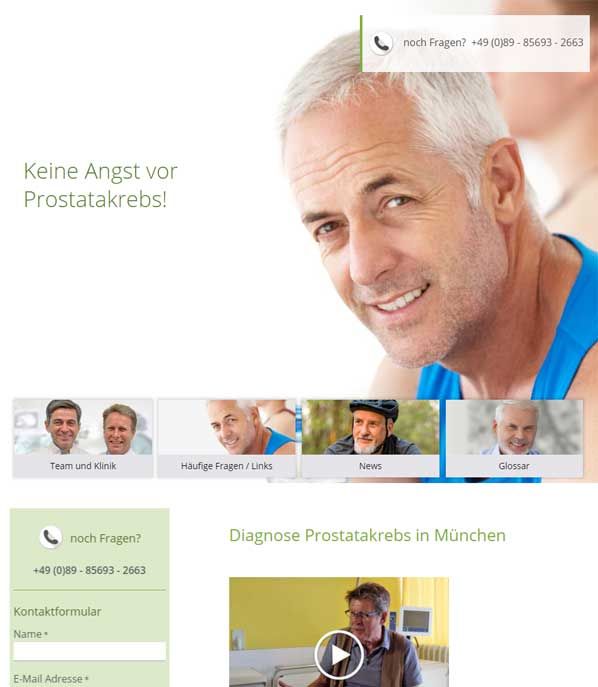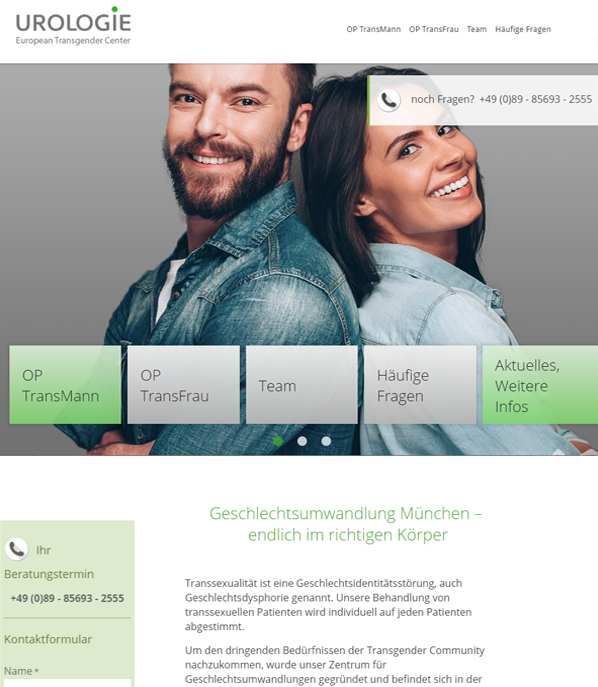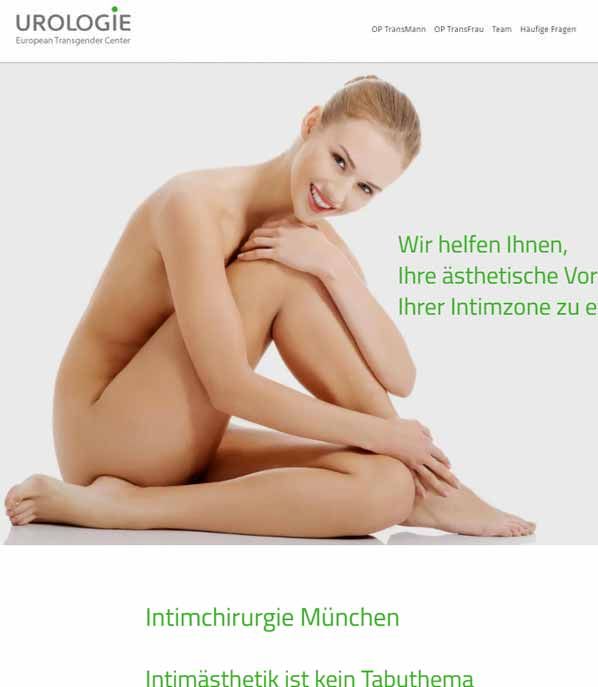Surgical treatment of BPH
When is surgery absolutely necessary?
- Recurrent urinary retention
- Recurrent visible blood in urine with unsuccessful conservative therapy
- Recurring urinary tract infections and epididymitis
- Bladder stone formation
- Urinary retention of the kidneys, kidney function deterioration and kidney failure
- Worsening symptoms despite drug therapy
What surgical procedures are available?
-
Holmium laser enucleation of the prostate
Laser enucleation is a modern endoscopic procedure for the treatment of benign prostatic hyperplasia. The laser technology allows for the removal of enlarged prostate tissue through endoscopic preparation along the prostate capsule. Its strength lies particularly in the effective and gentle treatment of large prostate adenomas (> 80 g). Even very large prostate glands (> 200 g) can be successfully treated in this way.
Thanks to a low bleeding and effective preparation in anatomical and therefore natural tissue layers, Holmium laser enucleation also shows very good results with rapid recovery and symptom relief even in smaller prostate adenomas (40-80 g). The hospital stay is usually 2-3 days. Unlike other laser procedures, the removed tissue can be examined histopathologically.
Advantages of Holmium laser enucleation:
- gentle and effective endoscopic surgical procedure utilizing natural tissue layers
- rapid and significant improvement in symptoms with good long-term results
- endoscopic standard therapy for prostate adenomas > 80 g alternative to TUR-P for prostate adenomas 40-80 g
- hospital stay of approximately 2-3 days
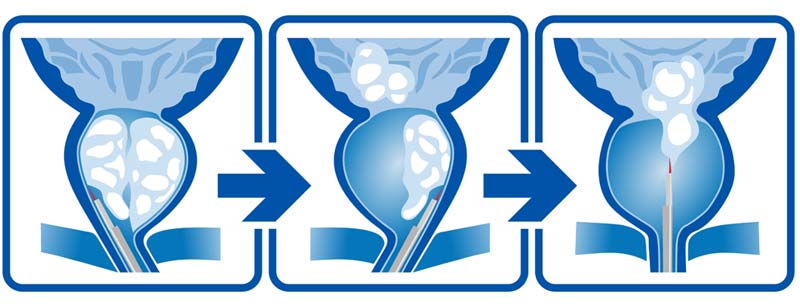
-
Transurethral resection of the prostate (TUR-P)
The standard surgical procedure for prostate enlargement up to 80 grams is so-called transurethral prostate resection, also known colloquially as prostate "shaving".
Using a cystoscopic instrument with a working channel, which is inserted through the urethra to the prostate, the surgeon removes prostate tissue with a current-carrying cutting loop, with the removed tissue being flushed out through the shaft of the instrument. The operation is usually performed under spinal (epidural) anaesthetic, which is less stressful for the body. The average inpatient stay is only approx. 5 days.
Despite further technical and medical developments, in particular in surgical laser procedures, the TUR-P method is still the gold standard for surgical BPH treatment by which all other methods must be measured. The data available for the other surgical treatment methods is very mixed. -
Rezum® water vapor therapy
In this procedure, the obstructive prostate adenoma is reduced endoscopically by injecting water vapor, leading to an improvement in symptoms within two weeks, usually without affecting ejaculation function.
Water vapor therapy can be safely used for obstructive lateral lobes as well as obstructive middle lobes.
The therapy is performed on an outpatient basis under analgesic sedationa and is particularly suitable for patients with mild to moderate symptoms who currently do not wish or are unable to undergo a volume-reducing procedure or anesthesia.
Currently, Rezum® water vapor therapy is not covered by statutory health insurance. The costs of the procedure will be charged to patients as a self-pay service.
Benefits of water vapor therapy:
- Gentle procedure using water vapor injection
- Significant improvement in symptoms (IPSS, Q-max)
- Outpatient therapy under analgesic sedationa
- Very low-risk profile
- Suitable for mild to moderate BPH symptoms
- Ejaculation preserving (in about 80% of cases)
-
Prostate surgery via an abdominal incision (suprapubic prostate adenoma enucleation)
This surgical procedure is necessary when
- the enlarged prostate exceeds a weight of 80 to 100g,
- large bladder stones are present at the same time, or
- large bladder diverticula due to residual urine formation or frequent infections must be additionally removed during the same session.
This operation is usually performed under general anaesthetic. The average operation time is about 60 minutes, the inpatient stay about 8 days. If an inguinal hernia is also present, this can be treated in the same session.
What behavioural measures have to be observed after the operation?
- After the operation, it is normal for the patient to have visible blood in his urine for approx. 4 - 6 weeks, especially if necessary blood thinning medication has been resumed.
In order to prevent blood vessels from rupturing, powerful pressing during bowel movements or urination should be avoided, and care should be taken to ensure sufficient fluid intake (at least 2 litres per day). The patient should also (in the first 4 - 6 weeks after the operation) avoid strenuous physical exertion, lifting heavy loads (max. 10 kg), and cycling. - Immediately after the operation, patients are more susceptible to cystitis due to the large wound area. Therefore, they should avoid hot baths or sauna visits for the first 2 weeks. If they notice a burning sensation while urinating or have foul-smelling urine or a high temperature, they must consult a specialist.
- In addition, at the beginning they may still suffer in particular from urge symptoms, with a very frequent need for often still painful urination with only small amounts, and a sudden urge to urinate. This should not be confused with ongoing incontinence. The symptoms are due to the large wound area, which is easily irritable, and will subside in the first weeks after surgery.



